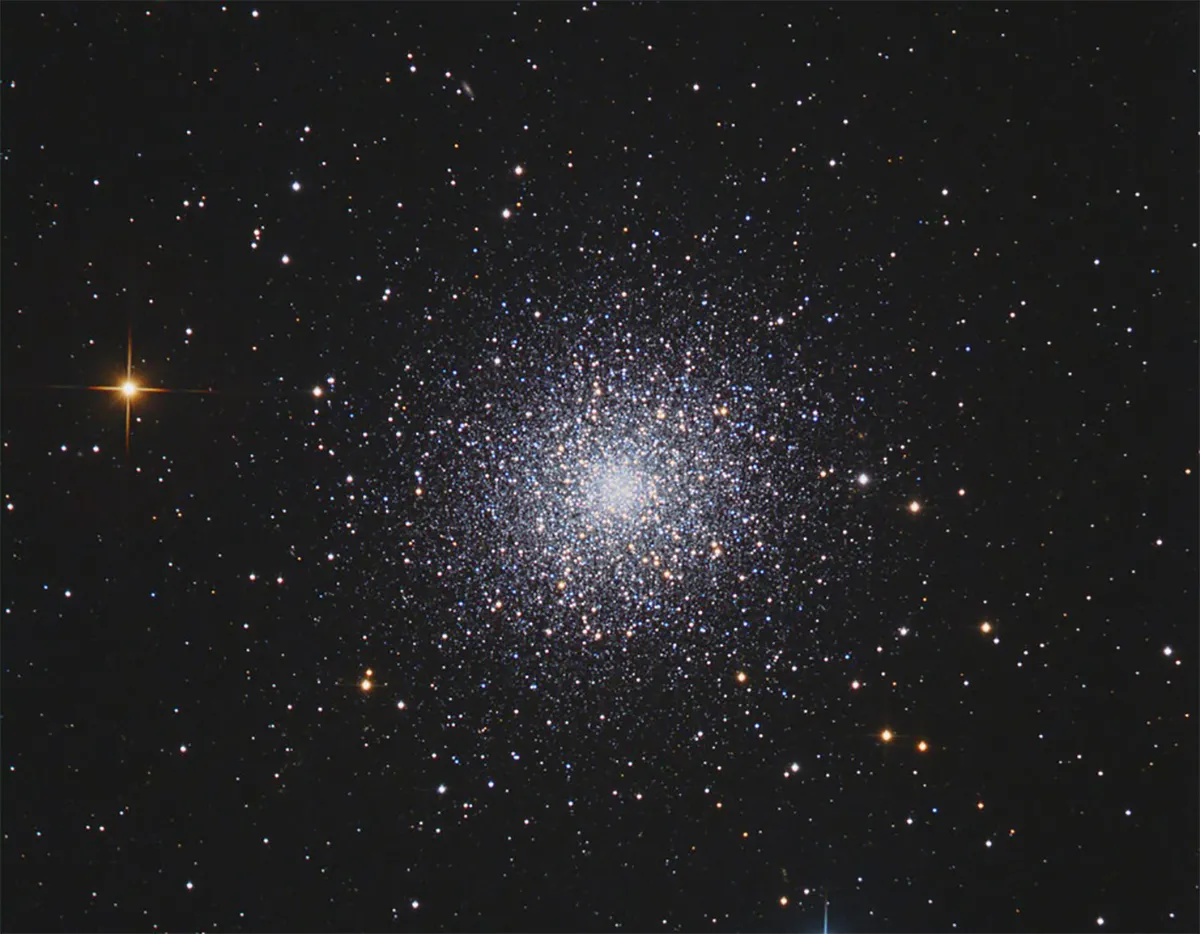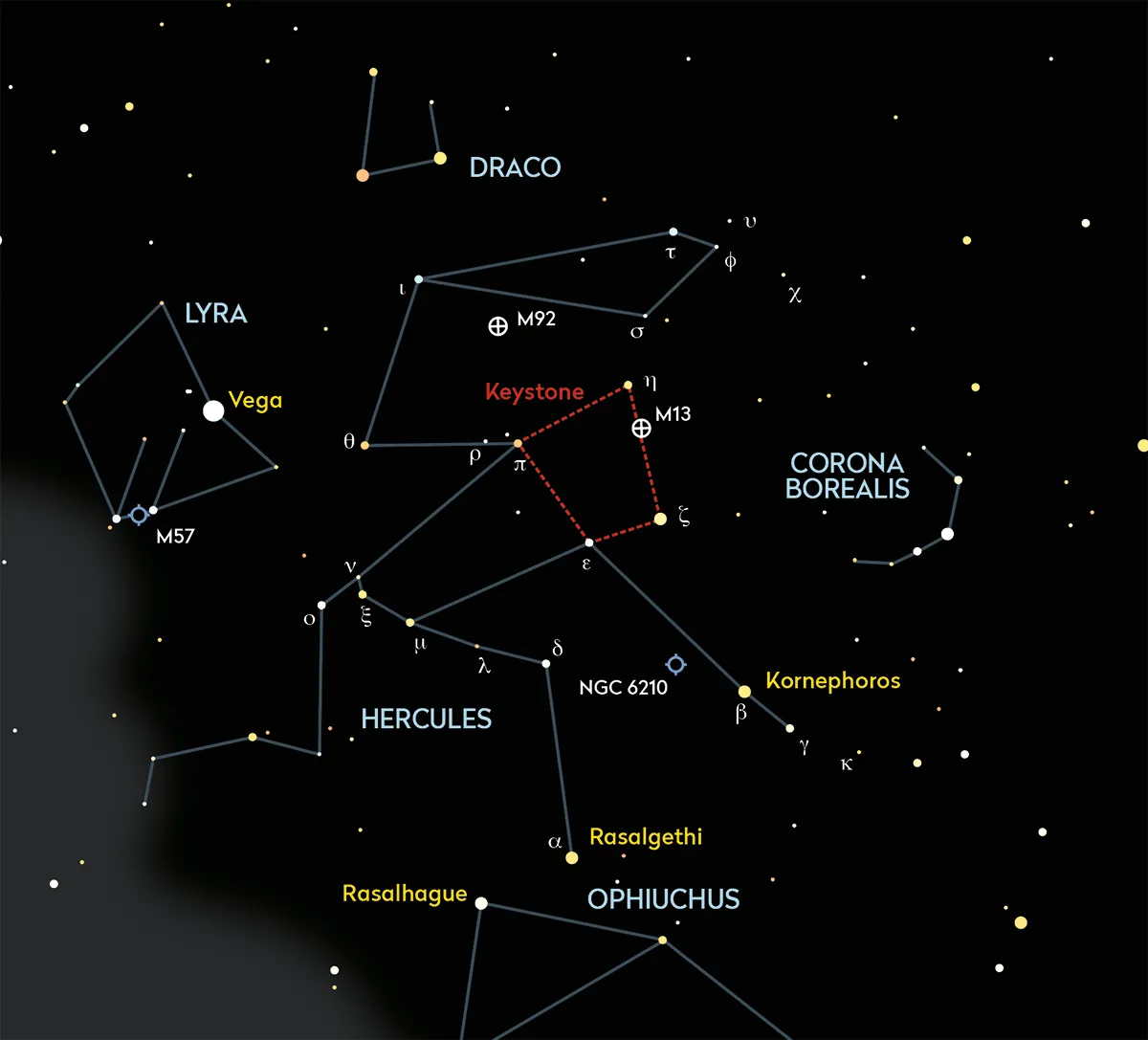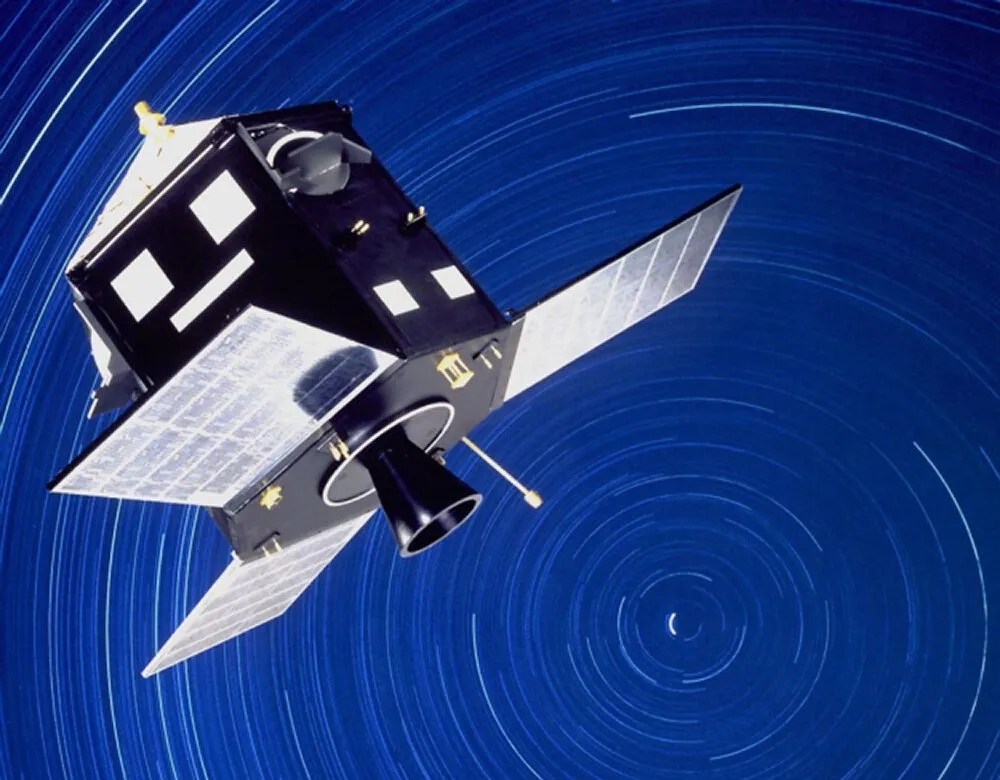Hercules, the Hero is a faint and sprawling constellation that's best seen in the northern hemisphere during the summer months.
It borders the constellations Draco, Lyra, Ophiuchus and Corona Borealis and is perhaps best known to deep-sky observers for containing the globular cluster M13, also known as the Hercules Globular Cluster.

The constellation Hercules lacks any bright stars, but is saved by a faint asterism known as the Keystone, which represents Hercules' defensive 'skirt' or lower part of his tunic.
The constellation is upside down as seen from the UK, despite the figure looking like he's carrying a club above his head (this is his foot).
It’s remarkable how identifiable this shape is, considering its brightest star is mag. +2.8 Zeta (ζ) Herculis.
Heading south and a bit west from Zeta Herculis brings you to Kornephoros (Beta (β) Herculis), which shares its mag. +2.8 brightness with Rasalgethi (Alpha (α) Herculis), 13 ̊ to Kornephoros’s east-southeast.
And Kornephoros is a star in Hercules that's certainly worth your attention.

Take a closer look at star Kornephoros
Kornephoros means ‘club bearer’, and it was previously named Rutilicus, a corruption of the Greek word for ‘armpit’.
This luminous yellow giant star is located 139 million lightyears away and is actually a spectroscopic binary star system with a period of 410 days.
The primary is 2.9 times more massive than our own Sun and has a diameter 17 times larger.
Its spectral type is G7 IIIa, a yellow giant star in the throes of expanding as it moves off the main-sequence of stellar evolution.
The III indicates that Kornephoros is a giant star with the letter ‘a’ indicating it’s a bit brighter than a typical giant.
Not much is known about the secondary except that it’s 0.9 times as massive as the Sun.
The system is located 139 lightyears away and it was resolved by an Earth-based observatory using the ‘speckle interferometry’ technique.
This involved the use of the Hale Telescope, while follow-up observations using the Hipparcos satellite in 2005 allowed more detail to be determined in respect of the orbit.

This is known to be elliptical with an eccentricity of 0.55. Eccentricity is a measure of the ellipticity of an orbit, 0 being circular and 1 being parabolic and open.
The orbit is also inclined by 53.8 ̊ to our line of sight.
Hercules might not be the most impressive constellation to look at, but if you can find Kornephoros in the night sky, consider the stellar science behind this incredible speck of light in our northern hemisphere sky.
This guide originally appeared in the June issue of BBC Sky at Night Magazine.
